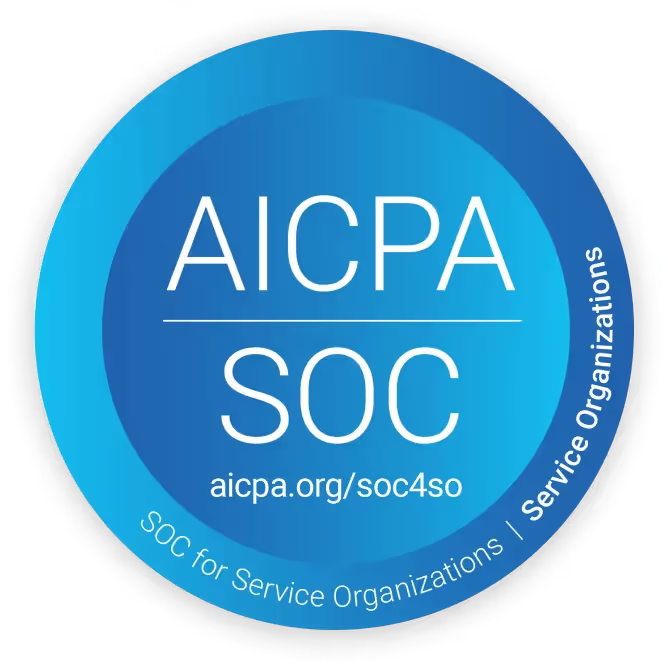But that model is changing. Automation is already pushing prices down. And new AI tools now handle many tasks faster, cheaper, and often better than human agents can.
The average BPO is working hard to stay competitive and profitable.
But lower prices don’t have to mean lost margins. Bring your costs down faster than your rates, and profit per hour actually increases.
This article explores how smart BPOs are using AI agents and automation to do exactly that—reducing prices for clients while protecting (or even improving) their bottom line.
Typical profit margins: how BPOs make money
At its core, the BPO model is about volume and efficiency. Clients are billed per hour, per minute, or per seat, and the more billable hours or seats contracted, the more revenue for the BPO.
This model is relatively resource-intensive: you need human agents to fill those seats. Most providers face the same common challenges:
- Rising labor costs in high-income markets. Local talent ensures quality, but it’s expensive. Call center turnover rates are 30-40% each year. Meanwhile, full offshoring can create reputational risk—consumers prefer local, specially trained customer service agents, even if this is rarer today.
- Inconsistent agent performance, especially with large teams across different time zones and training levels.
- Global customer bases, as it becomes easier to sell products anywhere in the world. The best call centers can handle interactions in virtually any language or dialect, but this brings additional resource concerns.
- Downward pricing pressure from clients who now expect more for less, particularly in commodity support roles.
To maintain margins, BPOs have traditionally focused on optimizing staffing models, reducing churn, and improving training. But those tactics can only go so far—especially when new technologies are reshaping expectations.
How AI and automation fit into BPO workflows
AI tools are already reshaping everyday call center operations. In the right places, they save time, reduce costs, and boost consistency.
Here’s where AI fits best today:
- Front-line triage: Automatically routing calls, answering FAQs, or handling account lookups before a human ever gets involved.
- Simple outbound calls: Voice agents can manage reminders, surveys, and payment collections at scale.
- Post-call processing: AI can instantly transcribe calls, log compliance steps, and summarize key points.
- Follow-ups and task assignment: Scheduling callbacks or flagging complex cases for human agents—without manual effort.
- Quality assurance and compliance monitoring: AI continuously analyzes live or recorded calls for adherence to scripts, regulatory requirements, and customer service standards, flagging deviations in real time for rapid intervention. This helps ensure consistent compliance and reduces the risk of costly violations or reputational damage.
- Real-time agent coaching: AI-driven prompts and compliance alerts during calls help agents correct course immediately, enhancing quality without the delay of post-call review.
- Fraud detection and risk mitigation: By monitoring speech patterns and key phrases, AI can alert supervisors to potential fraud or suspicious activity during calls.
The most effective approach is hybrid. AI agents handle structured, repeatable tasks. Human agents step in when empathy, nuance, or judgment is needed. It’s not about replacing people—it’s about using them where they matter most.
Future use cases for call center agents
We’re just scratching the surface of what’s possible with AI in BPO services today. In fact, we’re already starting to see more expansive, future-focused use cases emerging. These include:
- Predictive analytics for proactive service: AI analyzes customer history and sentiment to anticipate issues or upsell opportunities, enabling agents to personalize interactions and improve outcomes.
- Dynamic scripting and decision support: For both inbound and outbound calls, AI can adjust scripts on-the-fly based on conversation context, improving relevance and success rates.
- Multilingual real-time translation: Agents can engage with customers speaking different languages seamlessly, expanding market reach without needing specialized staff.
- Sentiment-driven call prioritization: AI routes high-emotion or at-risk customer calls to senior agents or specialized teams, improving retention and satisfaction.
- Automated outbound outreach optimization: AI determines the best times, channels, and messaging for follow-up calls, maximizing contact rates and campaign ROI.
Together, these applications demonstrate how AI is not only streamlining routine tasks but also enabling smarter, more responsive, and compliant BPO operations that adapt to evolving business needs.
The benefits of embracing AI in BPO
AI isn’t just about efficiency—it’s a strategic lever to stay competitive and protect margins in a changing market.
Here’s why it pays off:
- Better margins, even at lower prices: An AI voice agent might only bill at $10/hour—far less than a $40-50/hour human agent—but it costs even less to run. That spread means better margin per unit.
- Lower variable costs: No breaks, training, taxes, or turnover. AI agents are always available, always consistent.
- Scales instantly: Adding more AI capacity is faster and cheaper than hiring and onboarding new agents.
- Reduces reliance on labor arbitrage: You’re no longer limited by geography or wage differences to protect margin.
- Serves more clients with fewer resources: Growth becomes more about compute power than headcount. AI helps Duolingo, with over 500 million users, maintain resolution rates north of 80%.
- Improves human agent performance. Agent assist tools help make call center staff more dynamic and impactful in their roles. And above all, AI frees them from the most repetitive, low-value tasks that occupy so much time today.
Real-world example: comparing margins
It’s easy to assume that lower client billing means lower profits. But when automation dramatically reduces delivery costs, the opposite can be true. Let’s break it down.
Imagine two common service models for a simple, repeatable task like appointment reminders:
Human agent:
- Client pays: $50/hour
- Agent wages + overhead: $28/hour
- Margin = $12/hour (30%)
AI agent:
- Client pays: $12/hour
- Tech cost (infrastructure, licensing, support): $4/hour
- Margin = $8/hour (67%)
Even though top-line revenue is lower with the AI service, profit per hour more than doubles in percentage terms. And this doesn’t even include volume advantages: AI agents can handle more calls, 24/7, without fatigue or ramp-up time.
Hybrid human/AI service models
Many BPOs are now piloting blended models—using AI for high-volume, low-complexity tasks, and routing more nuanced conversations to human agents. Here’s how that model can impact margins.
Hybrid example (per-hour average):
- Client pays: $25/hour
- AI handles 60% of interactions, costing ~$4/hour
- Human handles 40%, costing ~$11/hour
- Blended delivery cost = $15/hour
- Margin = $10/hour (40%)
In short: less revenue, more profit. This is how BPOs can win in a price-sensitive, automation-driven market.
Why better margins don’t mean worse service
Cutting costs doesn't have to mean cutting corners. In fact, when automation is used strategically, service quality can improve—while margins increase.
- Hybrid models preserve the human touch. AI handles repetitive, low-complexity tasks—like account lookups, password resets, and balance inquiries—freeing up human agents to focus on emotionally sensitive, complex, or high-value conversations.
For instance, a BPO serving a telecom client might deploy AI agents to handle 60% of inbound queries (billing status, plan upgrades, etc.) and escalate the rest to live agents with full context in hand. The customer gets a faster, smoother experience—and the BPO lowers cost per call.
- Agent assist tools make humans better, not redundant. Real-time transcription, powered by high-accuracy ASR, allows for instant call summarization and smart coaching. Tools can prompt agents with suggested replies, next steps, or cross-sell opportunities—right as they speak.
For example, in customer support for e-commerce, an AI agent assist platform can flag warranty eligibility or refund conditions mid-call, letting the human resolve the case on first contact without digging through databases.
- Language tools eliminate borders. With real-time speech-to-text (STT) and machine translation, agents can work in their preferred language while still serving customers globally.
A BPO in the Philippines could have Tagalog-speaking agents serving Spanish-speaking customers in Mexico, using real-time STT + MT to bridge the gap in both directions. This reduces hiring challenges and dramatically expands service coverage.
- Each party can focus on their core tasks. AI tools take most of the heavy lifting out of the hands of human agents. Meanwhile, AI agent containment lets you restrict artificial intelligence to the specific tasks you want it to perform.
Whether that’s in direct interactions with customers, or lending a hand to your teams, you can be sure that AI contributions are focused and useful at all times.
The result is a more consistent and higher-quality customer experience:
- Shorter wait times, as AI handles volume.
- Better accuracy, as agents follow intelligent prompts and scripts.
- Higher CSAT and NPS, since customers feel heard and understood.
And behind the scenes, costs are dropping—not because quality is sacrificed, but because efficiency is multiplied.
Grow your BPO profits efficiently
Top-line revenue is no longer the only lever to grow your BPO business and measure success. Instead, the most successful providers today focus on optimizing margins, recognizing that hourly billing won’t be the best pricing approach for long.
This shift is driven and enabled by new technology. AI agents let you charge less, while taking home more. A lower rate per hour is more than offset by lower costs and greater efficiency.
And it’s easier to find creative, flexible pricing strategies. You can offer tiered packages—fully automated, hybrid, or premium human-led services—to fit different budgets and use cases.
Embracing AI and automation doesn’t mean cutting corners or lowering your standards. In fact, you’re a building smarter, leaner business. And you’re ready for the rapid change and new challenges that are sure to come next.
The future belongs to providers who deliver quality and profitability together.
Want to add real-time transcription and AI agents to your BPO offering? Talk to our team.



.png)
.png)


